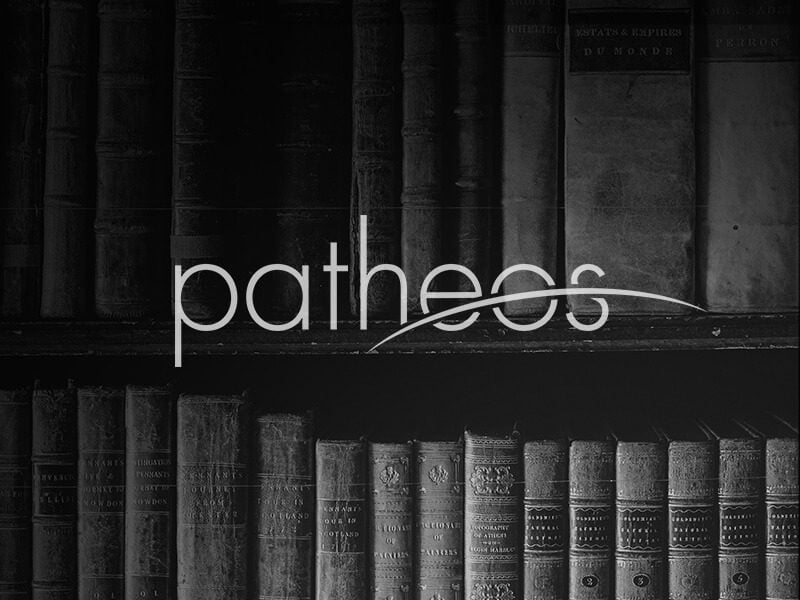 The Mahabharata is one of the most neglected literary classics of the world. In many ways, this is understandable, because it is one of the largest epics over produced, being composed of 100,000 lines. It takes considerable effort to translate something far shorter than this. The only complete translations are old, and based upon an uncritical edition of the text, and, in general, theirs style makes it difficult for the average person to read. Recently, Penguin Classics released a newly abridged translation of the text by John D. Smith.
The Mahabharata is one of the most neglected literary classics of the world. In many ways, this is understandable, because it is one of the largest epics over produced, being composed of 100,000 lines. It takes considerable effort to translate something far shorter than this. The only complete translations are old, and based upon an uncritical edition of the text, and, in general, theirs style makes it difficult for the average person to read. Recently, Penguin Classics released a newly abridged translation of the text by John D. Smith.
This is a good, readable text, written as prose instead of verse. The book is composed of translations and summaries, about 50% of the time, the book is a translation, 50% of the time, the book summarizing events not translated. The summaries are good and make sure one is not left unaware of anything vital. This means Smith has translated roughly 10% of the complete text. While I might wish he translated different selections than he did, because I have interest in the work as a religious text, I understand why he chose what he did. He is interested in relating the story, and things which would slow down the story are summarized. Don’t let the fact that half of the book is a summary fool you, though. This is a thick book, and will take you some time to read. The notes at the beginning are worthwhile, and should help the reader unfamiliar with the story or its history. The translation is roughly 790 pages long, and includes a needful glossary in the back, relating all the characters you might otherwise have difficulty keeping track of because of how many there are in this tale.
The story itself is about the Bharata lineage, and how a group of cousins were led to fight one another for control of throne of Hastinapura, the kingdom ruled by the Kurus. The pre-condition for this war is that one side of the royal line is seen as the incarnation of demons, while the other side, the sons of gods. The heroes, the five sons of Pandu, Yudhisthira, Bhima, Arjuna, Nakula and Sahadeva, are the rightful heirs to the throne, but their cousins, led by Duryodhana, figure out a way to take it from them: through a rigged dice game.[1] At the end of the game, the five brothers are sent into the forest for twelve years, hide out for a thirteenth (due to the stipulations of the match), and then come back and demand to have a share in the kingdom – splitting it half-way with their cousins. Duryodhana, his brothers, and his allies decline. We are then shown an eighteen day war.
The war itself is brutal. There is roughly four million people involved in it. The heroes from both sides hold great power, and great weapons, allowing them to kill tens of thousands of soldiers in a single attack. There is an apparent glory in bloodshed – when one of the heroes or the other is entirely encased in arrows, it is described as a thing of glory. There are so many massacres and one-on-one fights that one wonders if the war will never end. One tires of it. But perhaps this is a part of the point of the story. We are to be tired of war.
The text is full of apparent contradictions: the dharma of non-violence is greater than the dharma of war; asceticism is greater than sacrifice; dharma is to be followed, except when dharma would lead to adharma, etc. While there is a sense of a hierarchy of values and truths which is being proposed by these contradictions, it requires the reader to figure them out for themselves (or commentators, who would, and do, contradict one another – to see how this plays out, one merely needs to read the different commentaries on the Bhagavad Gita, which is merely a section, though highly important one, of the Mahabharata, and see what radically different interpretations Hindus have given to Krishna’s speech to Arjuna).
One of the interesting aspects of the story, and explaining why it is so long, is that we are actually being told many stories – we have a story within a story, and within the secondary story, more stories are being told. The framework allows one to be introduced to much of the Hindu Pantheon, and the stories of the gods and heroes of old are used as examples for the characters in the Mahabharata to encourage them to do what is necessary, even if they question whether or not it is right. They are either showed the hidden nature of reality which they did not perceive, or why certain actions, which would normally lead to demerit, must be done. But the text shows that even when they have to engage morally questionable actions, those actions end up having negative consequences (of different levels) to those who performed them, showing that even what is necessary does not override the moral value of the actions themselves.
Krishna (Krsna) has, as to be expected, a central role in the story. He is the incarnation of Vishnu, who, in some Hindu theologies (and in some places in the Mahabharata ) is the true God, from whom all other gods and the world are made. He is kin to all the major players in the war, and loves people on both sides. While he works for peace, he knows there will be war, and sides with the sons of Pandu. He gives boons to people on both sides – he gives his armies to one, his presence as a charioteer for Arjuna to the other. He promises he will not fight, only direct the chariot – but in the war itself, he is the one who is urging the battles to continue, and, it is clear, he wants to fight, and has to be held back several times to keep his oath. This might be what one would not expect from someone who is supposed to be God incarnate, and yet, it is clear that Krishna’s goal’s are from a perspective different from ours: he sees this war as necessary in order to put a check to the demonic powers which were trying to inhabit the earth. Even though successful, there is a catch: the war itself brings in the fourth age of the earth, the Kali Yuga, which is the darkest age of world history.
While I do feel that one who has not studied Hinduism will get less out of this text than those familiar with Hindu traditions, the book should be comprehensible by all readers. And if one is wanting to do a course of study of the classics of world literature, this is a must; while there might be other translations which are better for specific interests, this is the best single translation for the average reader. Read it. It’s worth your time.
Even though I might quibble in what Smith translated (I wish he had provided the reader a complete translation of the Gita, but I expect he was told not to do so by the publisher, and I wish he had more of the religious material at the end of the war translated instead of summarized), as a whole there is no way one can rate this as anything other than 5/5. It’s a major work of literature, on the level of Homer’s works, brought together in a new, readable translation.
[1] The five sons of Pandu have another brother, Karna, who they do not know is their brother until after Arjuna kills him in battle. Karna, while siding with the wrong side in the battle, is shown to be a loyal, honest man and is respected in ways beyond even the heroes of the tale because of this. It was his pride and anger which got the best of him – he wanted to be seen as Arjuna’s better. He is one of the great tragic characters of epic history.












